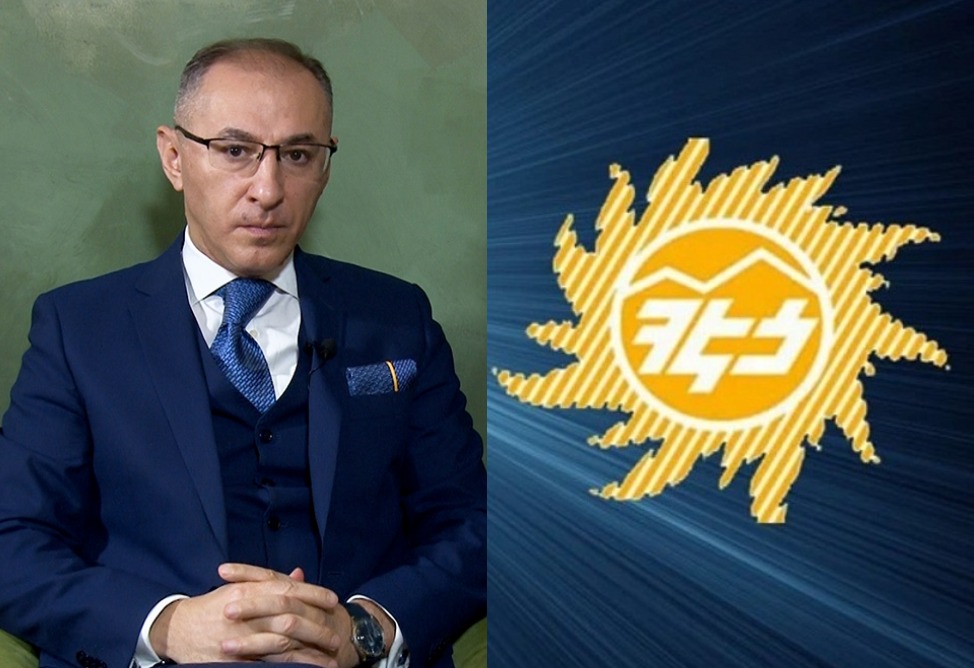40% of electricity to be produced by nuclear power sector in Armenia by 2025
24.02.2009,
21:00
Armenia is to get 40% of its electricity produced by the nuclear power sector by 2025, Armenian Deputy Minister of Energy and Natural Resources Areg Galstyan said at a round-table discussion with a Russian delegation from Sverdlovsk.
YEREVAN, February 24. /ARKA/. Armenia is to get 40% of its electricity produced by the nuclear power sector by 2025, Armenian Deputy Minister of Energy and Natural Resources Areg Galstyan said at a round-table discussion with a Russian delegation from Sverdlovsk.
By the same time, renewable energy sector will be providing 30% of energy produced in Armenia with the remaining share provided by thermal radiation power sector, he said.
Galstyan reported that for this a number of strategic documents were adopted based on four principles - nuclear power development, maximal use of own renewable resources, diversification of routes of energy resource supplies and maximal integration in regional energy markets. He added that Armenia has also the obligation to close down its current nuclear power plant (NPP).
Galstyan reported that a tender was announced for management of the NPP closing-down process and a feasibility study was conducted.
The country is also taking measures to attract foreign investors in its renewable energy sector, he said.
Midget power plants are expected to provide 5% of the overall volume of energy produced in Armenia. Achievements in wind power sector are less tangible, yet several licenses were issued for this activity, Galstyan said.
The Deputy Minister said that Armenia is making attempts to move forward also in development of geothermal power plants. In particular, territory is assigned for construction of such a plant and the issue is to be settled by the end of the year.
Armenian is underdeveloped in terms of biogas production, waste recycling and wastewater treatment.
Energy savings field is also in its initial stage despite the respective strategy developed by the government. Yet, use of energy saving technologies will help Armenia save up to 15% of primary energy resources, Galstyan said.
The Deputy Minister also reminded that Armenia had the most developed export-orientated energy system in the South region and that it was exporting 30% of its energy production. This structure is maintained in Armenian energy sector despite the hard period.
“Our energy sector is one of the most developed ones both in institutional and export terms on the post-Soviet area,” Galstyan said.
Energy production totaled 6,114.3mln kilowatt-hours in Armenia in 2008, which is a 3.7% increase against the level of 2007. Energy yield of Armenian NPP was 2,461.6mln kilowatt-hours in January-December 2008, which constituted 40.3% of the overall volume of energy production over the period under period.
Heat stations produced 1,831.9mln kilowatt-hours or 30% of overall production. Midget power plants generated 1,818.9mln kilowatt-hours of electricity or 29.8% of the overall yield in the country.–0--
By the same time, renewable energy sector will be providing 30% of energy produced in Armenia with the remaining share provided by thermal radiation power sector, he said.
Galstyan reported that for this a number of strategic documents were adopted based on four principles - nuclear power development, maximal use of own renewable resources, diversification of routes of energy resource supplies and maximal integration in regional energy markets. He added that Armenia has also the obligation to close down its current nuclear power plant (NPP).
Galstyan reported that a tender was announced for management of the NPP closing-down process and a feasibility study was conducted.
The country is also taking measures to attract foreign investors in its renewable energy sector, he said.
Midget power plants are expected to provide 5% of the overall volume of energy produced in Armenia. Achievements in wind power sector are less tangible, yet several licenses were issued for this activity, Galstyan said.
The Deputy Minister said that Armenia is making attempts to move forward also in development of geothermal power plants. In particular, territory is assigned for construction of such a plant and the issue is to be settled by the end of the year.
Armenian is underdeveloped in terms of biogas production, waste recycling and wastewater treatment.
Energy savings field is also in its initial stage despite the respective strategy developed by the government. Yet, use of energy saving technologies will help Armenia save up to 15% of primary energy resources, Galstyan said.
The Deputy Minister also reminded that Armenia had the most developed export-orientated energy system in the South region and that it was exporting 30% of its energy production. This structure is maintained in Armenian energy sector despite the hard period.
“Our energy sector is one of the most developed ones both in institutional and export terms on the post-Soviet area,” Galstyan said.
Energy production totaled 6,114.3mln kilowatt-hours in Armenia in 2008, which is a 3.7% increase against the level of 2007. Energy yield of Armenian NPP was 2,461.6mln kilowatt-hours in January-December 2008, which constituted 40.3% of the overall volume of energy production over the period under period.
Heat stations produced 1,831.9mln kilowatt-hours or 30% of overall production. Midget power plants generated 1,818.9mln kilowatt-hours of electricity or 29.8% of the overall yield in the country.–0--



